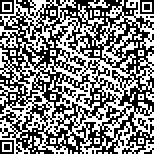|
|
|
| |
|
|
| 本文已被:浏览 5404次 下载 6558次 |

码上扫一扫! |
|
|
| 杂色角孔海胆形态学观察、亲缘关系及性腺营养成分分析 |
|
赵文飞, 李喆, 黄小芳, 张杨, 丁君, 常亚青
|
|
大连海洋大学 农业农村部北方海水增养殖重点实验室 大连 116023
|
|
| 摘要: |
| 本研究以杂色角孔海胆(Salmacis sphaeroides variegate)为研究材料,观察其形态,基于线粒体16S rDNA基因部分序列分析杂色角孔海胆与其他棘皮动物的亲缘关系,同时分析杂色角孔海胆性腺中的营养成分,为杂色角孔海胆种质改良和资源评估积累数据。结果显示,杂色角孔海胆的主要形态特征具有口器较小,每个步带板的外缘有3~4个小的圆形凹孔,管足壁内的骨片为C形。通过Mega 5.0对其他棘皮动物和得到的杂色角孔海胆的线粒体16S rDNA基因部分序列进行比较,基于距离法(NJ)和最大似然法(MP)分别构建系统树。结果显示,杂色角孔海胆与疏棘角孔海胆(Salmacis bicolor rarispina)的亲缘关系最近,其次是刻肋海胆属的3种海胆;杂色角孔海胆性腺中水分为86.1%,灰分为3.0%,粗脂肪为2.0%,蛋白质为8.01%;杂色角孔海胆性腺中的氨基酸种类共有16种,总含量为38.71 g/100 g,EAA/TAA为36.99%,EAA/NEAA为71.84%,DAA/TAA为37.17%;脂肪酸共检测到15种,含量最高的是棕榈酸C16:0、硬脂酸C18:0、EPA C20:5和花生四烯酸C20:4,含量最低的为二高-γ-亚麻酸C20:3,较其他海胆,其DHA含量较高。研究结果将为杂色角孔海胆的生物学研究提供基本资料,可用于经济海胆开发应用,同时也可为远缘杂交育种及经济海胆的种质鉴定提供理论依据。 |
| 关键词: 杂色角孔海胆 形态学 性腺营养成分 线粒体 16S rDNA |
| DOI:10.19663/j.issn2095-9869.20190220001 |
| 分类号: |
| 基金项目: |
|
| Morphological Observation, Relationship and Nutritional Composition Analysis of Gonadal of Salmacis sphaeroides variegate |
|
ZHAO Wenfei, LI Zhe, HUANG Xiaofang, ZHANG Yang, DING Jun, CHANG Yaqing
|
|
Key Laboratory of Mariculture & Stock Enhancement in North China's Sea, Ministry of Agriculture and Rural Affairs, College of Fisheries and Life Science, Dalian Ocean University, Dalian 116023
|
| Abstract: |
| In this study, Salmacis sphaeroides variegata was used as the research material to observe its morphology. Based on mitochondrial 16S rDNA gene partial sequencing, the genetic relationship between S. sphaeroides variegata and other echinoderms was analyzed. The nutritional composition of S. sphaeroides variegata gonad was analyzed to accumulate a mass of data for germplasm improvement and resource evaluation of S. sphaeroides variegata. The results showed that the main morphological characteristics of the S. sphaeroides variegata were as follows: the apical system was small, the outer edge of each step band plate had 3~4 small circular pits, and the bone fragment in the wall of the pedicle foot was C-shaped. The mitochondrial 16S rDNA gene sequences of other echinoderms and that obtained from S. sphaeroides variegata were compared by Mega 5.0, and the phylogenetic trees were constructed based on distance method (NJ) and maximum likelihood method (MP). The results showed that the S. sphaeroides variegata was closely related to the Salmacis bicolor, followed by the three species of sea urchins, the Temnopleuridae. An amount of water 86.1%, ash 3.0%, crude fat 2.0% and protein 8.01% was found in the sex glands of S. sphaeroides variegata. There were 16 kinds of amino acids in the sex glands of S. sphaeroides variegata, the total amino acid content was 38.71 g/100 g, EAA/TAA was 36.99%, EAA/NEAA was 71.84%, and DAA/TAA was 37.17%. A total of 15 fatty acids were detected, with the highest content being palmitic acid C16:0, stearic acid C18:0, EPA C20:5 and arachidonic acid C20:4, and the lowest content was that of C20:3. S. sphaeroides variegata showed a higher content of DHA than in other sea urchins. The results will provide basic data for the biological study of S. sphaeroides variegata and can be used for the development and application of sea urchin of economic value, as well as provide a theoretical basis for distant hybridization breeding and the germplasm identification of economically viable sea urchins. |
| Key words: Salmacis sphaeroides variegate Morphology Gonadal nutrition Mitochondria 16S rDNA |
|
|
|
|